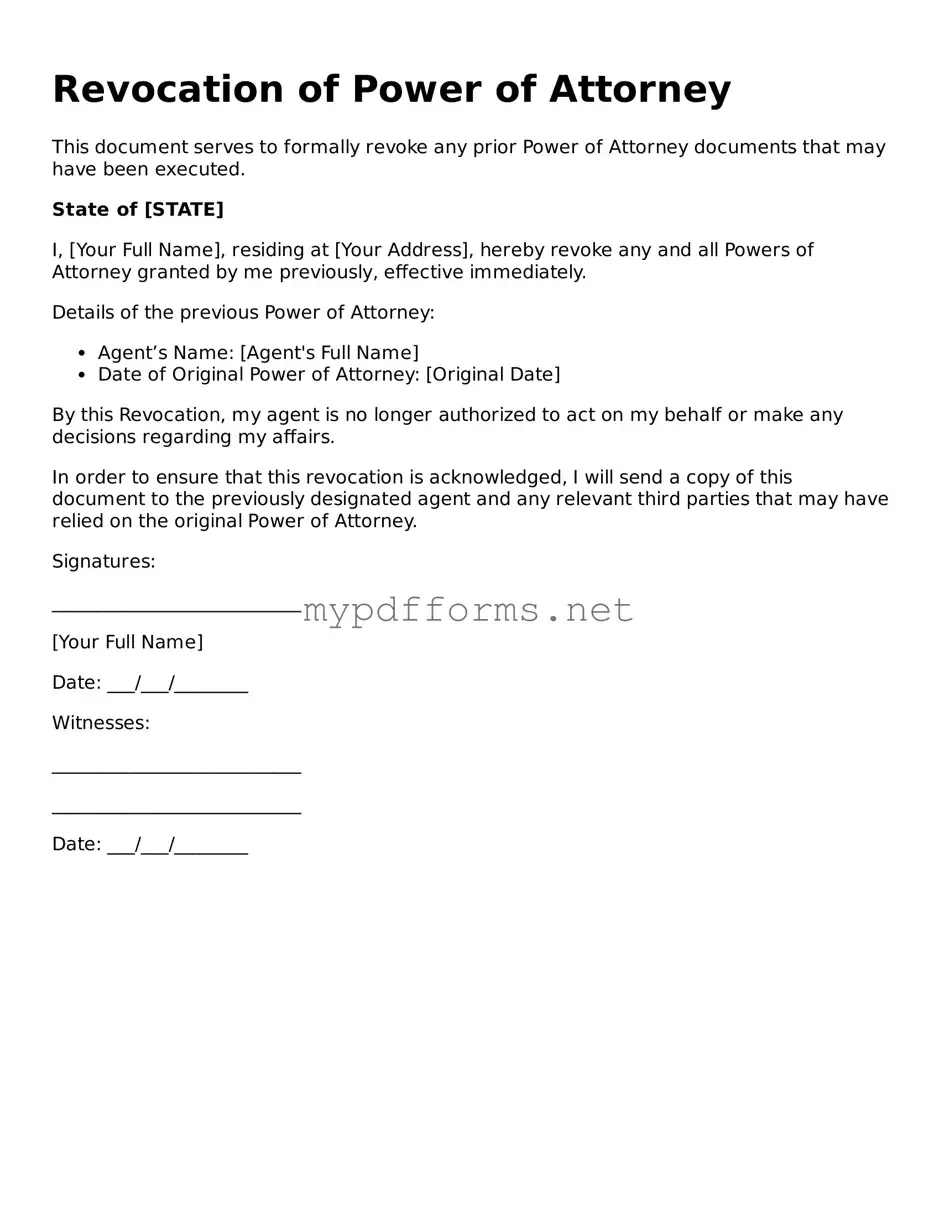The Revocation of Power of Attorney form is similar to a Durable Power of Attorney. Both documents deal with the authority given to an agent to act on behalf of another person. However, the Durable Power of Attorney remains effective even if the principal becomes incapacitated. In contrast, the Revocation form serves to cancel the authority granted, making it clear that the agent can no longer act on behalf of the principal.
Another related document is the Limited Power of Attorney. This type of document grants specific powers to an agent for a defined period or particular purpose. While the Limited Power of Attorney allows for certain actions, the Revocation of Power of Attorney completely nullifies any previously granted authority, regardless of its scope.
The Medical Power of Attorney is also comparable. This document specifically allows someone to make healthcare decisions on behalf of another person. Like the Revocation form, it can be revoked at any time. However, the Medical Power of Attorney focuses solely on health-related decisions, while the Revocation form can apply to a broader range of powers.
Understanding the various forms of Power of Attorney is essential for effective decision-making in legal and financial matters. For those interested in creating or revoking such documents, resources like https://floridapdfform.com can provide valuable guidance to navigate the complexities involved.
A Living Will is another document that shares similarities. While a Living Will outlines a person’s wishes regarding medical treatment in end-of-life situations, it can be revoked just like a Power of Attorney. Both documents ensure that a person’s preferences are respected, but they serve different purposes and contexts.
The Advance Healthcare Directive combines elements of both the Medical Power of Attorney and the Living Will. It allows individuals to specify their healthcare preferences and appoint an agent. Revocation of this directive is possible, similar to the Revocation of Power of Attorney, but the focus remains on healthcare decisions.
A Trust Agreement also shares some similarities. While a Trust allows a trustee to manage assets for beneficiaries, it can be revoked or amended by the grantor. The Revocation of Power of Attorney can similarly terminate an agent's authority, but it does not involve asset management like a Trust does.
The Consent to Release Information form is comparable in that it allows one person to give another the authority to access personal information. This form can be revoked at any time, just like the Revocation of Power of Attorney. However, the Consent form is typically limited to information sharing, while the Power of Attorney covers broader decision-making powers.
The Non-Disclosure Agreement (NDA) is another document that can be revoked. An NDA protects confidential information shared between parties. While the Revocation of Power of Attorney cancels authority, an NDA can be terminated to stop the obligation of confidentiality. Both documents can be revoked but serve different purposes in legal contexts.
Finally, the Authorization for Release of Medical Records is similar to the Revocation of Power of Attorney in that it allows individuals to control who can access their medical information. This authorization can be revoked at any time, just like the Power of Attorney. However, it specifically pertains to medical records, whereas the Power of Attorney encompasses a wider range of decisions and actions.
